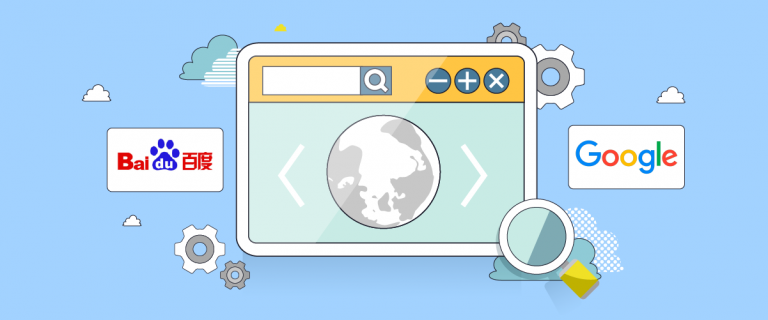Having a multilingual site is important for every website owner who wants to go global. Choosing the right fonts is crucial to making your site friendly to an international audience. These unique fonts, called multilingual web fonts, are designed to handle various languages and scripts, ensuring your website looks good and is easy to read for everyone. But remember, not all fonts work well with every language. That’s why it’s important to choose the right multilingual font for your website to avoid any unpleasant or illegible symbols.
What are multilingual web fonts?
Multilingual web fonts are designed to support different languages and writing systems. They offer extensive language support, ensuring website content appears correctly when translated into various languages. By using multilingual web fonts, web owners can optimize the user experience and reach smoothly to a global audience.
These fonts not only support different characters, but they also accommodate unique features of writing systems, such as complex scripts, diacritical marks, ligatures, and special characters. This ensures that the visual representation of text remains consistent across different languages, creating a seamless user experience.
The importance of multilingual fonts on your website
When users visit a website and find text displayed in their native language, it creates a sense of familiarity and builds trust. This, in turn, encourages users to spend more time on the website, increasing engagement and ultimately leading to higher conversions.
Choosing the right multilingual font is essential for creating a consistent user experience and supporting localization web design. A font family supporting various languages and writing systems ensures that the website remains visually appealing, regardless of the user’s chosen language. It also eliminates the need for text to be manually adjusted or substituted, which may result in inconsistencies or text display issues. By streamlining multilingual typography and using CSS rules, you can effortlessly render text in different languages without the need to search for a single font that supports all languages present on your website, both now and in the future.
What to consider when choosing a multilingual font
When selecting a multilingual font for your website, it’s essential to dive deep into several critical considerations to ensure your site communicates effectively across the globe. The right font does more than just display text; it bridges cultural and linguistic gaps, making your content accessible and engaging for a diverse audience. Here are the key factors to keep in mind:
Language Support: The cornerstone of a multilingual font is its ability to support a wide range of languages and scripts. This isn’t just about including the most widely spoken languages; it’s about ensuring your website can cater to niche audiences with unique writing systems. Whether it’s Latin scripts for English and Spanish, Arabic’s flowing calligraphy, Cyrillic’s distinct forms for Russian, or the intricate characters of Asian languages like Chinese and Japanese, comprehensive language support ensures every word on your site is displayed as intended.
Font Family Variety: A robust font family offers a toolkit of typographic styles—regular, bold, italic, and more. This variety is not just for aesthetic appeal; it’s crucial for maintaining the readability and emphasis across different languages. Some scripts may require heavier weights for clarity, while others might look best in a lighter style. A diverse font family empowers you to maintain visual consistency and effectiveness across all linguistic content.
Compatibility with Website Text: Not all fonts are created equal, especially when it comes to fitting into your website’s design. A font might look great in a heading but fall short in body text readability or vice versa. It’s important to consider how your chosen font performs across various applications—be it in lengthy articles, snappy headers, or user navigation elements. The goal is to ensure that regardless of where text appears on your site, it remains clear, legible, and visually cohesive.
Furthermore, exploring fonts that offer trial periods or come with a license for verification before purchase can save you from future headaches. This proactive approach allows you to test the waters, ensuring the font you choose integrates seamlessly with your site’s design and fulfills your multilingual needs without surprises. Let’s explore the best options for you.
10+ Best multilingual fonts for your website
When designing a website, it’s crucial to use fonts that support multiple languages to cater to a diverse audience. Google Fonts provides a vast selection of free multilingual fonts, while Adobe Fonts and Typekit offer premium options. Choosing Unicode-compliant fonts is essential to ensure compatibility across various devices and operating systems. Also, consider the legibility and readability of the font for the languages featured on your website. By prioritizing these factors, you can guarantee that your website’s text is visually appealing and easily accessible to a global audience. Here’s a list of multilingual fonts that you can use for your website.t is visually appealing and easily accessible to a global audience.
1. Google Noto Fonts

Google Noto is the world’s largest multilingual font that supports over 800 languages. It has been designed to be compatible with all scripts and symbols across different languages, making it a versatile option for various design needs. Google Noto provides various styles such as serif and sans-serif that can be integrated seamlessly into your website, resulting in improved user experience and accessibility for visitors who speak different languages. The best part is that Google Noto fonts are free to use and do not have any licensing restrictions. By using Google Noto fonts, you can effectively reach a broader audience and enhance the visual appeal of your website without incurring any additional costs.
2. Gill Sans Nova
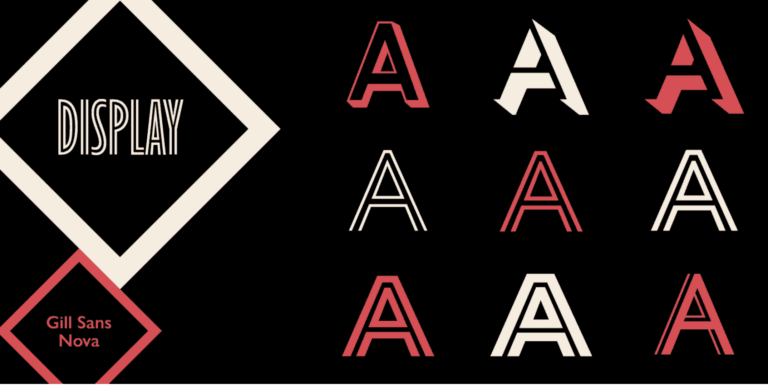
Gill Sans Nova is a modern take on the classic Gill Sans Typeface that stands out for its exceptional legibility on screens of any size. Its minimalist and clean design lends itself well to contemporary website aesthetics, making it a popular choice for branding, advertising, and editorial design purposes. This versatile font supports various languages and writing systems, further enhancing its appeal to designers worldwide.
The font’s readability makes it an excellent option for commercial use, providing a polished look and ease of use. Its versatility has made it a go-to choice for website developers and graphic designers who require a modern typeface that can adapt seamlessly to various applications. In short, Gill Sans Nova is a contemporary favorite among designers due to its adaptability, readability, and aesthetic appeal. Whether designing for print or digital media, this font is an excellent option for achieving a polished and professional look.
3. Helvetica World

Embracing the versatility of Helvetica World means adopting a typeface renowned for its seamless support across multiple languages, paired with a comprehensive selection of 17 styles to accommodate a wide range of design requirements. It’s a font that finds its place both on the web and in print, earning the trust of major brands such as BMW and American Airlines for its reliability and professional appeal.
The simplicity and clarity of Helvetica World make it an unparalleled choice for multilingual websites, guaranteeing effortless readability on various screens. Moreover, the font’s adaptability and user-friendliness position it as a leading option when selecting the best multilingual fonts for your digital presence. Additionally, Helvetica World’s consistent performance and elegant appearance help to enhance the global reach of your content, bridging language barriers with style and precision.
4. SST Typeface
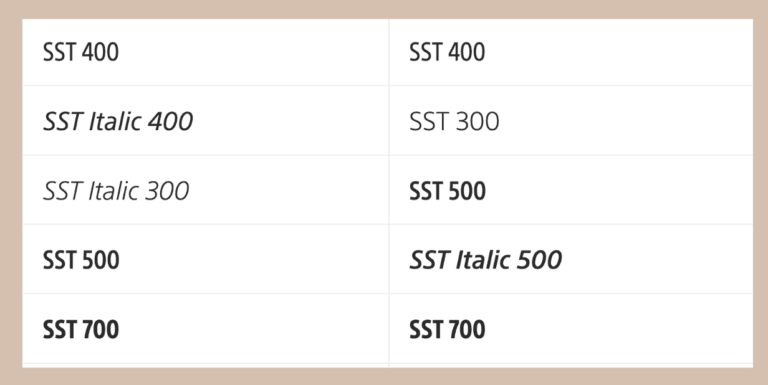
SST Typeface is a versatile and adaptable font family that can easily accommodate various languages. It offers a wide range of weights and styles, making it suitable for different design requirements. The font supports Latin, Cyrillic, and Greek scripts, which makes it perfect for creating multilingual websites and ensures legible text for enhanced readability on diverse devices.
Many brands and businesses prefer this font because of its effectiveness in communicating across different languages and cultures, making it an excellent choice for commercial purposes and multilingual endeavors. Its flexibility also allows it to be used in various applications such as web design, advertising materials, corporate branding, and editorial publications. With its modern and sleek appearance, SST Typeface has become popular among designers who prioritize functionality without compromising aesthetics.
5. Restora
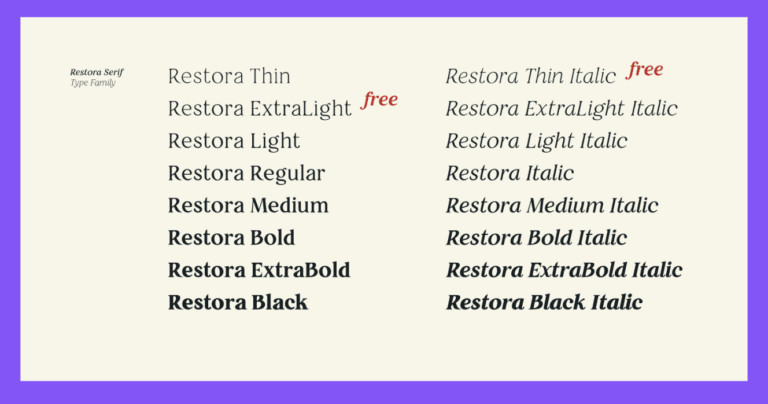
The Restora Typeface, supporting Latin, Cyrillic, and Greek scripts, is a versatile and elegant font suitable for a broad range of design needs. Its refined curves and detailed design add sophistication to any platform, ensuring readability even at smaller sizes. Ideal for global websites, Restora’s extensive character set caters to international audiences with ease. This font merges aesthetic appeal with practical functionality, making it perfect for both commercial and creative projects.
It’s available under a paid license, offering a professional solution for those seeking a high-quality, multilingual typeface to enhance their brand’s online presence. With Restora, you invest in a typeface that promises both style and comprehensive language support, making it a valuable asset for any digital endeavor.
6. Misto Typeface

Inspired by the urban landscape of Slavutych, Ukraine, Misto Typeface is a modern and versatile font designed to support multiple languages on international websites. With excellent legibility on both small and large screens, Misto Typeface offers different weights and styles to accommodate various design needs, enhancing user experience for non-native speakers and improving accessibility. Its adaptability makes it an ideal choice for commercial purposes, offering a smooth reading experience for users across different languages. Additionally, Misto Typeface offers a free license for personal and commercial use, making it an even more attractive option for web designers and developers. By seamlessly blending elegance and modernity, Misto Typeface stands out as one of the best multilingual fonts for websites in 2024, aligning with the high standards set by contemporary typefaces.
7. Suisse
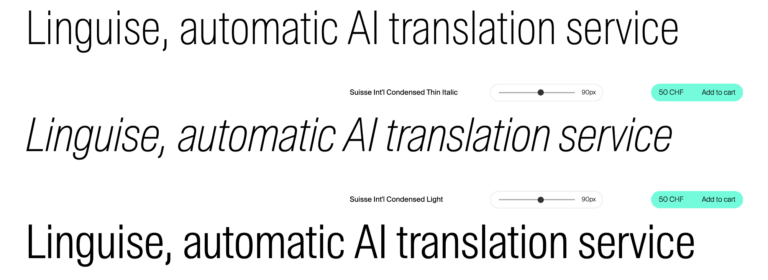
The Suisse Typeface embodies excellence in design, establishing itself as a premier choice for multilingual websites. With its extensive character set, it effortlessly accommodates a variety of languages, including Arabic, Cyrillic, and Greek. The font’s modern and clean design shines in both bold and regular weights, providing versatility for various website aesthetics. Exceptional legibility across different contexts enhances Suisse Typeface’s suitability for a wide range of website designs, boosting its appeal for commercial use. Its adaptability to multiple languages and styles meets the demands of global websites, securing its status as one of the top multilingual fonts on the market. Available under a licensed agreement, Suisse Typeface offers a professional-grade solution for businesses and designers seeking to elevate their online presence with a high-quality, versatile typeface.
8. Argesta

The Argesta Typeface combines elegance with practicality, making it perfect for websites that cater to a global audience. Its design is clear and easy to read in many languages, improving the look of both online and printed content. With a range of weights and styles, Argesta can be tailored to different design needs, helping to keep users engaged and making websites more effective.
Key to Argesta’s versatility is its comprehensive set of diacritic glyphs. These are essential for accurately displaying the accents and special characters found in numerous languages, ensuring that text is presented correctly and inclusively for all readers.
Argesta is offered on a subscription basis. This means you can access all its features, including regular updates and improvements, with a flexible plan that fits your project’s scale.
9. Katislen

If you’re looking for a font that can seamlessly display multiple languages on your website, Katislen is an excellent choice! This font supports various scripts, such as Cyrillic and Latin, making it a versatile and elegant option for maintaining consistency in your website’s text. For instance, you can use Katislen to display the title of your website in Russian while keeping the body text in English.
The clear and easy-to-read letterforms make it perfect for both headings and body text, ensuring that your content is easily accessible to all audiences. Katislen’s multiple weights and styles allow you to add a modern twist to traditional typefaces. You can use the bold weight to emphasize important information on your website. With its unique design elements, Katislen is a standout choice for websites with global audiences.
10. Open Sans
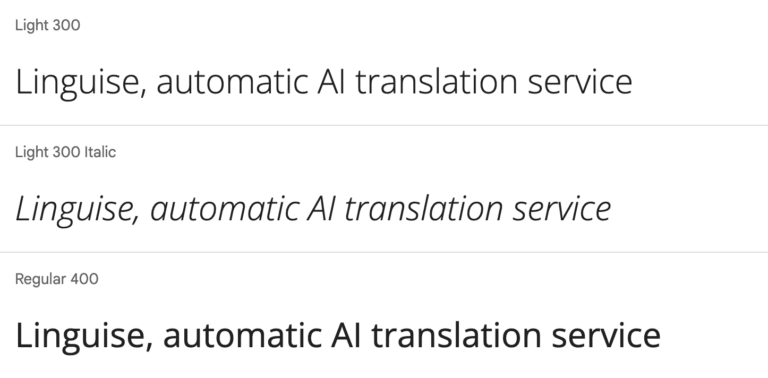
Open Sans is a versatile font with widespread appeal and exceptional legibility that has infinite potential. Crafted by Steve Matteson, this font can accommodate over 10 languages, making it an excellent choice for diverse audiences. It excels in both print and digital form, particularly on screens, making it ideal for online content across various industries.
The contemporary and uncluttered aesthetic of Open Sans makes it popular among designers looking for a font that ensures seamless readability and adaptability for a multitude of purposes. Incorporating Open Sans into your website’s text unlocks endless possibilities for improving its visual appeal and accessibility.
Open Sans is also a flexible font that works harmoniously with other typefaces. Its clean lines and modern look make it easy to pair with other fonts to create visually appealing design combinations. It’s no wonder that Open Sans has become one of the most widely used fonts on the internet today.
11. Grotte
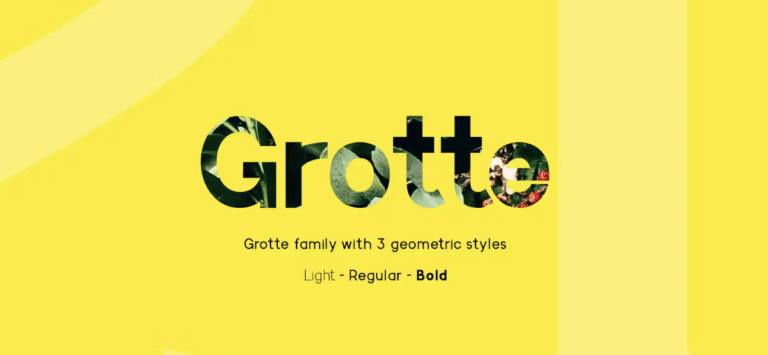
Grotte Typeface is designed for websites that need to display text in several languages, including Latin, Cyrillic, and Greek. Its simple design ensures your website looks elegant and text is easy to read. With different styles and weights, you can highlight important text and make sure your site works well on both computers and printed materials.
This font is a paid option, meaning you’ll need to buy it to use all its features. Investing in Grotte means your website will be ready for a global audience, with clear, attractive text in multiple languages.
How to check what languages are supported?
The most important thing you have to check before deciding on a multilingual font is what languages are supported. There are a couple of ways to do that, depending on where you search for the font. One of the biggest and most popular font libraries is Google Fonts, boasting over 1400 open source free fonts. Google Fonts provides a simple “Language” dropdown so you can easily filter whatever you need. Google Fonts “Language” dropdown Adobe Fonts provide similar functionality in terms of filtering the languages and browsing for the right one.
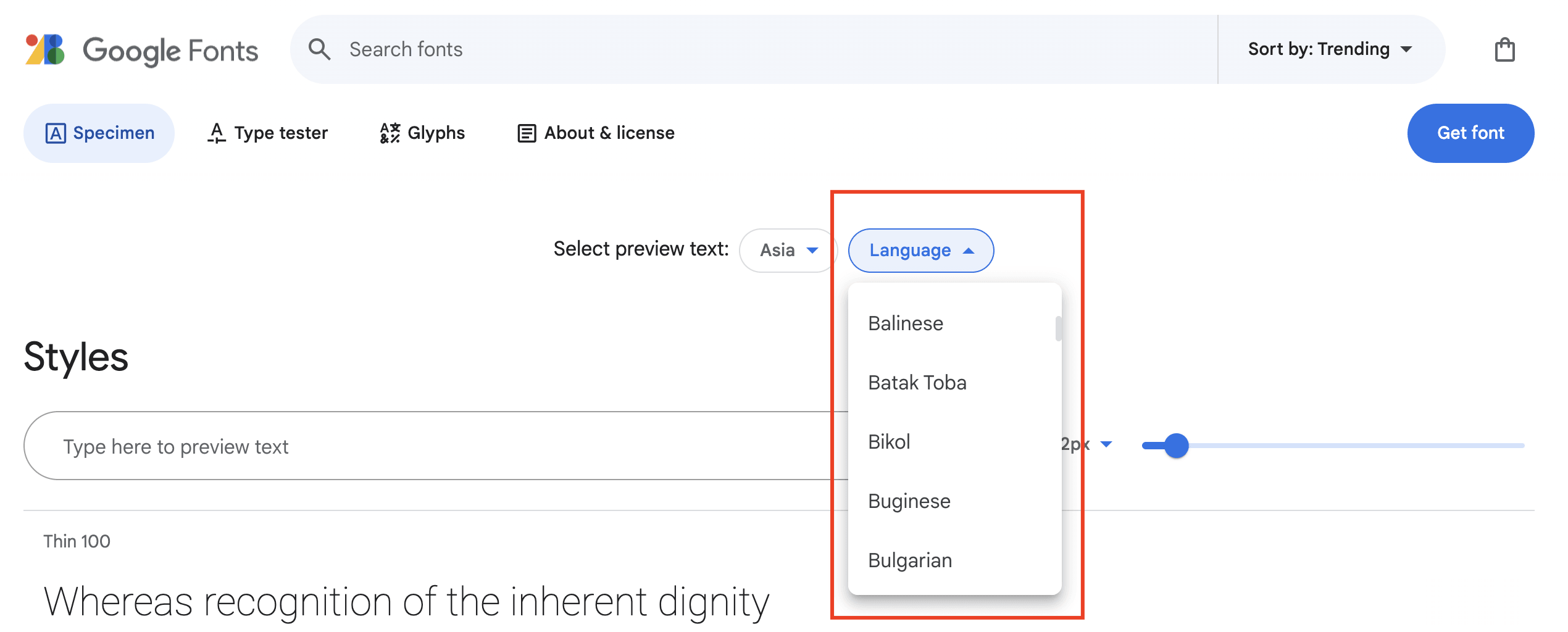
But if you’re paying for a font somewhere else, always make sure that it’s possible to check what languages it supports before it’s too late and you figure out there’s nothing you can do but to change the whole approach to optimizing your multilingual website. But regardless of these filtering options that some of the font libraries offer, you should always double-check if the font you want supports diacritical marks (like accents), different font styles (italic or bold) and font height. The highest point of a font is called the ascent line and the lowest point of a font is called the descent line. Best case scenario, all of your fonts should match at both points.
After find best multilingual font, what's next?
Choosing the right multilingual font for your website is essential for creating a seamless user experience and ensuring accurate text display across different languages. Factors such as language support, font styles, and compatibility with your website’s text should guide your selection process. It’s important to prioritize fonts with extensive language support to ensure text is accurately displayed in a variety of languages and writing systems. Additionally, selecting a multilingual font that complements your website’s overall design and aesthetic is crucial for maintaining consistent visual appeal and enhancing the user experience across various language versions of your site.
With Linguise, you can enhance the multilingual capabilities of your website, enabling translations into more than 80 languages in just a few minutes. The platform offers multiple user-friendly switcher designs that seamlessly integrate with your website’s layout.
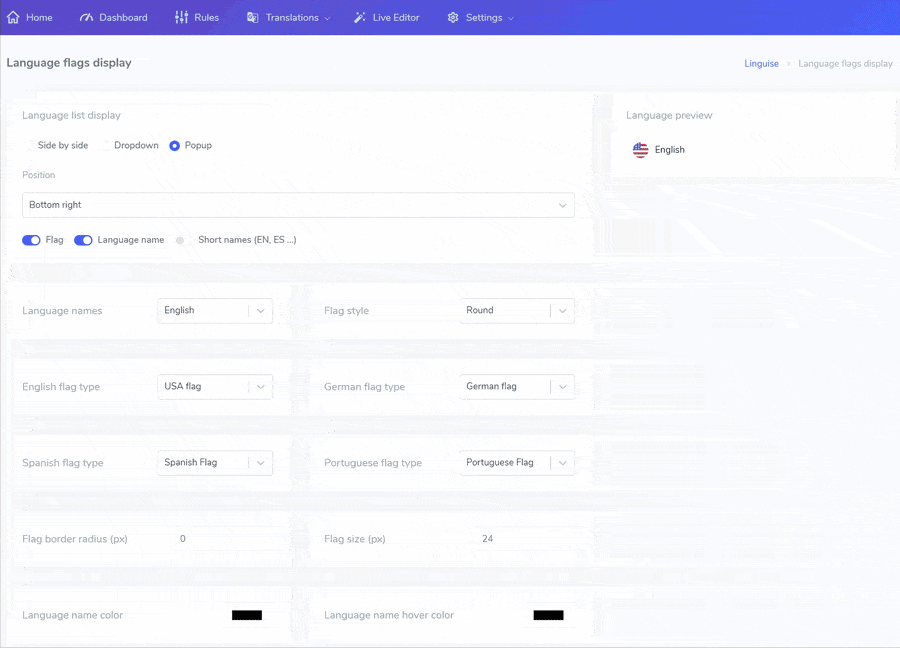
Moreover, if your site is based on WordPress or Joomla, you can easily adjust the font settings directly within the plugin, simplifying the process of maintaining a consistent and visually appealing multilingual website.
After understanding the importance of multilingual font, now is the time for you to localize your web design to reach a wider audience and increase user experience.
Register a Linguise account for free for 1 month, and localize the site by translating up to 600 thousand words!

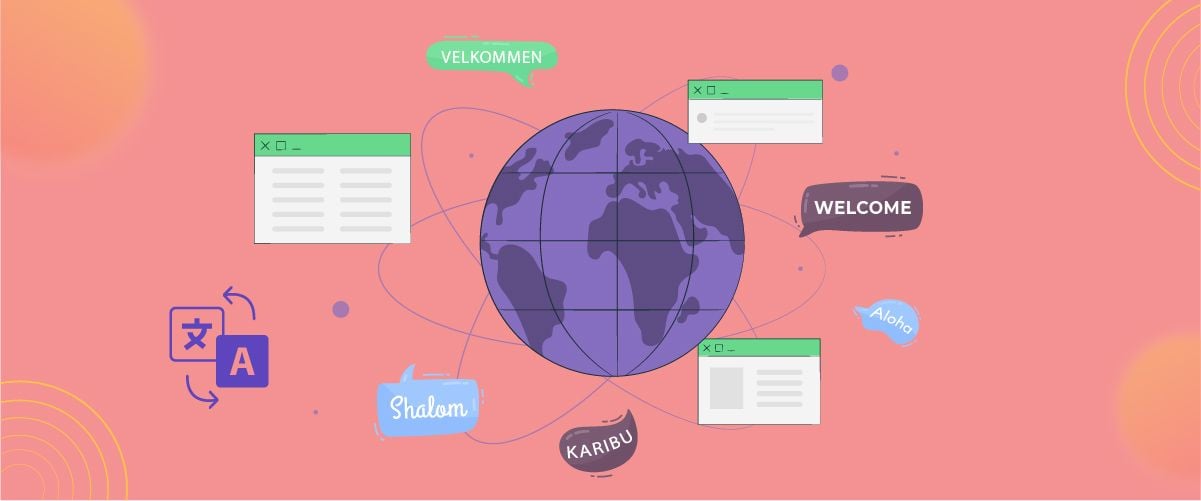

![Best Webflow Localization Alternative [Overview + Feature Comparasion]](https://www.linguise.com/wp-content/uploads/2024/07/FI_Best-Webflow-Localization-Alternatives-768x320.png)
